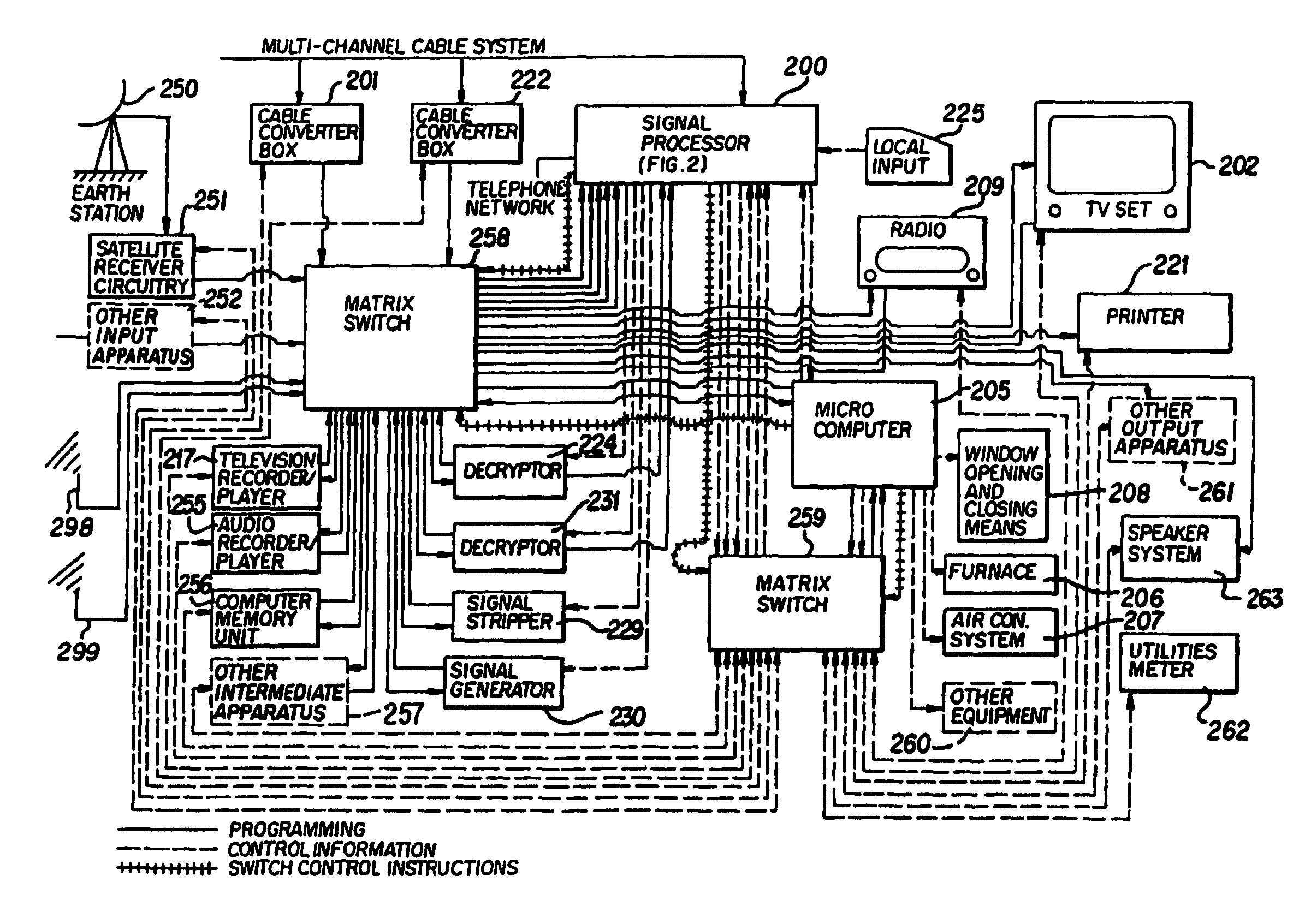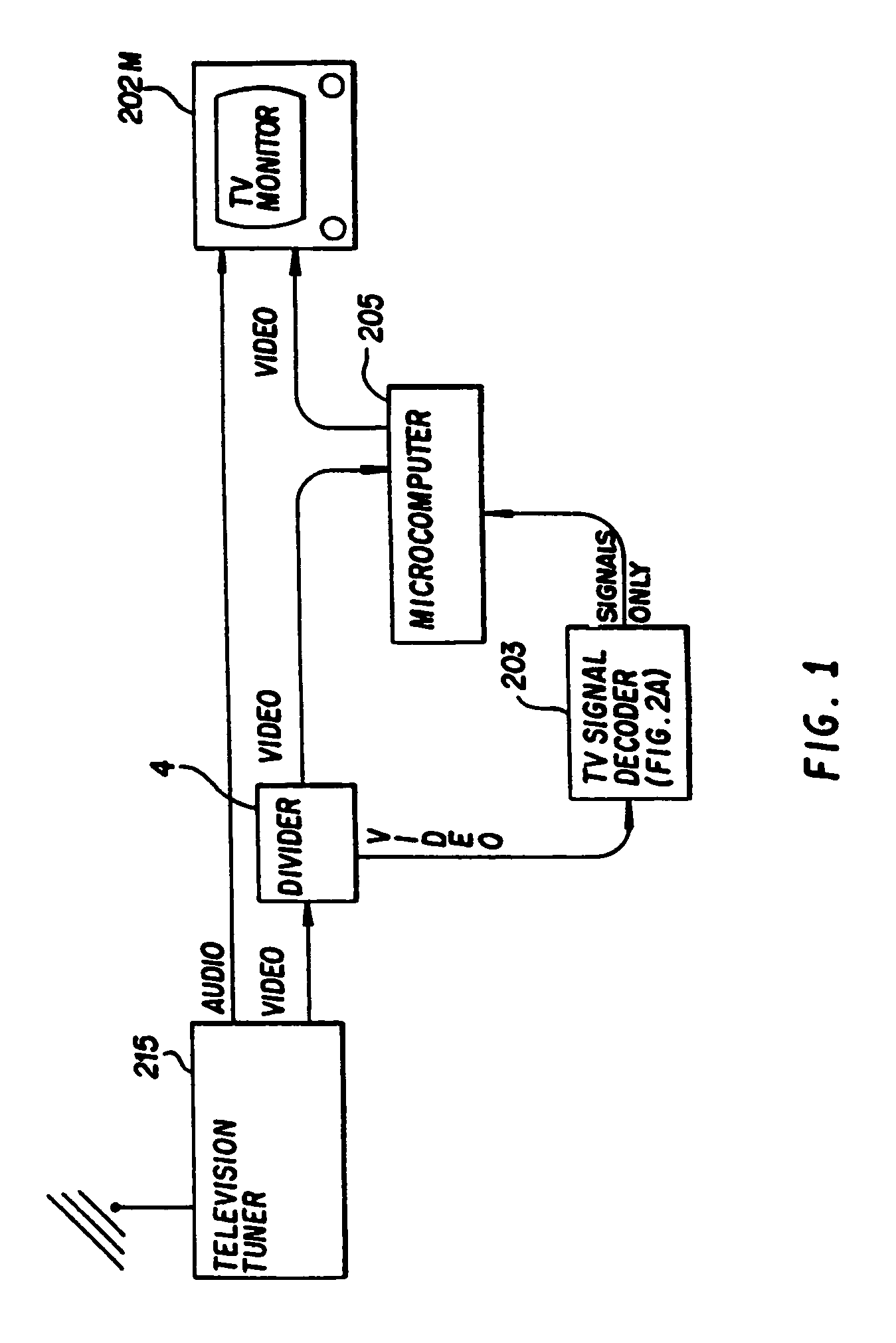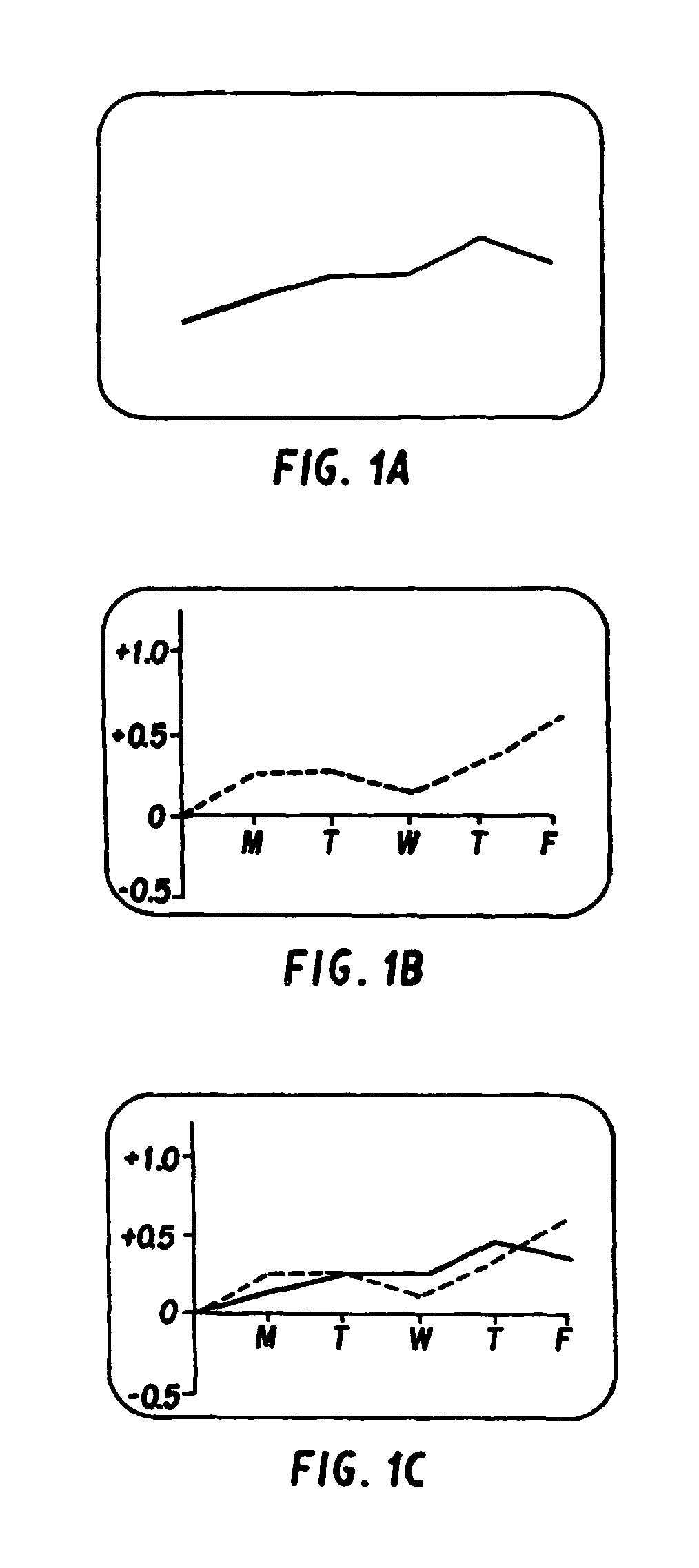Occasionally one viewer may see, hear, or read information of specific relevance to him (as happens when a guest on a television talk show turns to the camera and says, “Hi, Mom”), but such
electronic media have no capacity for conveying user specific information simultaneously to each user.
For years, computers have been recognized as having unsurpassed capacity for
processing and displaying user specific information.
But it requires much more.
This prior art is limited.
None has capacity to cause simultaneous generation of user specific information at a plurality of
receiver stations.
None has any capacity to cause subscriber
station computers to process received data, let alone in ways that are not inputted by the subscribers.
This prior art, too, is limited.
It has no capacity to cause receiver
station computers to generate any information whatsoever, let alone user specific information.
This prior art, too, is limited.
This prior art, too, is limited.
It has no capacity for controlling two separate systems such as, for example, an automatic radio and television stereo simulcast.
It has no capacity for selectively connecting radio receivers to radio peripherals such as computers or printers or speakers or for connecting computers to computer peripherals (except perhaps a
television set).
It has no capacity for controlling the operation of decryptors or selectively inputting transmissions to decryptors or outputting transmissions from decryptors to other apparatus.
It has no capacity for monitoring and maintaining records regarding what programming is selected or played on any apparatus or what apparatus is connected or how connected apparatus operate.
This prior art, too, is limited.
It has capacity to monitor only single broadcast stations, channels or units and lacks capacity to monitor more than one channel at a time or to monitor the combining of media.
It has assumed monitored signals of particular format in particular transmission locations and has lacked capacity to vary formats or locations or to distinguish and act on the absence of signals or to interpret and process in any fashion signals that appear in monitored locations that are not monitored signals.
It has lacked capacity to identify encrypted signals then decrypt them.
It has lacked capacity to
record and also transfer information to a remote geographic location simultaneously.
This prior art, too, is limited.
It has no capacity for automatically embedding signals in and / or removing embedded signals from a television transmission then recording the transmission.
It has no capacity for controlling the connection or actuation or tuning of external apparatus.
This prior art, too, is limited.
It has no capacity for identifying programming transmissions or control instructions selectively and transferring them to a decryptor for decryption.
It has no capacity for distinguishing the absence of an expected
signal or controlling any operation when such absence occurs.
Further significant limitations arise out of the failure to reconcile aspects of these individual areas of art—monitoring programming, automating ultimate receiver stations, decrypting programming, generating the programming itself, etc.—into an integrated
system.
These limitations are both technical and commercial.
But television has only so much capacity for transmitting signals outside the visible image; it is inefficient for such signals to serve only one function; and broadcasters can foresee alternate potential for this capacity that may be more profitable to them.
Accordingly, no independent automatic comprehensive so-called “proof-of-performance” audit service has yet proven commercially viable.
As a second example, because of the lack of a viable independent audit system, each service that broadcasts encrypted programming controls and services at each subscriber
station one or more receiver / decryptors dedicated to its service alone.
Lacking a viable audit system, services do not transmit to shared, common receiver / decryptors.
These are just two examples of limitations that arise in the absence of an integrated system of programming communication.
 Login to View More
Login to View More  Login to View More
Login to View More 


